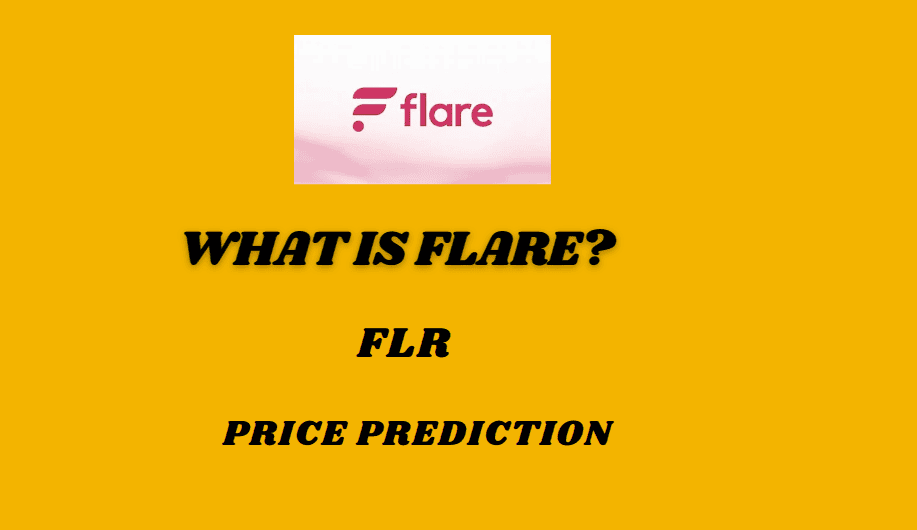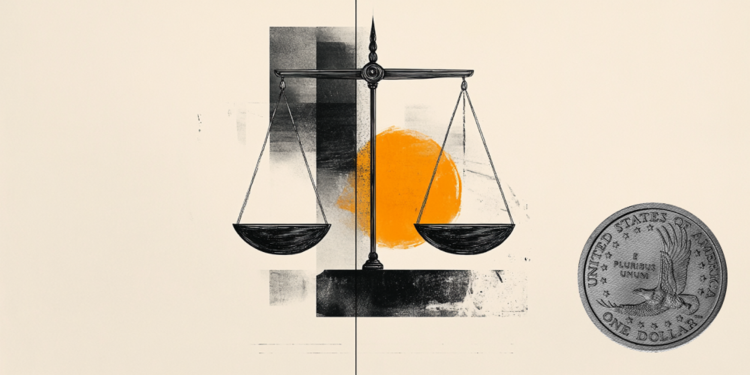What Is Flare? FLR Price Prediction 2025, 2026 to 2030

Flare and its native token, FLR, have emerged as significant players in the world of blockchain and cryptocurrency. Flare is a decentralized platform focused on enhancing interoperability between different blockchain networks. It achieves this by incorporating Ethereum’s smart contract functionality and employing the Avalanche consensus mechanism for scalability and security. Flare also features a two-way bridge that enables tokens from other networks to interact with it, facilitating cross-chain communication.
FLR, as Flare’s native utility token, plays a pivotal role within the ecosystem. It acts as collateral for creating F-assets, represents assets from other blockchains, and offers governance rights, allowing token holders to participate in key network decisions. Additionally, FLR is used to pay transaction fees, incentivize validators, and maintain the Flare Time Series Oracle.
But what is the market of Flare like? What does its future seem to be like? Keep reading to know more about FLR’s price history and price prediction.
About FLR
| Name | FLARE |
| Token | FLR |
| Price (as of 21st June 2025) |
$0.01701 |
| Circulating Supply | 67,604,737,661
FLR |
| Total Supply | 103,576,818,822 FLR |
| Circulating market cap |
$1,150,155,317 |
| Fully diluted market cap |
$1,762,146,160 |
| Website | Click here |
| Whitepaper | Click here |
| ATH | $0.1501 |
| ATL | $0.008274 |
What Is Flare?
Flare is a decentralized blockchain platform designed to enhance interoperability between different blockchain networks. It accomplishes this by incorporating Ethereum’s smart contract functionality while introducing unique features. Flare employs the Avalanche consensus mechanism, enhancing scalability and security. It also provides a two-way bridge for tokens from other networks to interact with Flare, opening up possibilities for cross-chain communication.
One of Flare’s primary innovations is the integration of the Ethereum Virtual Machine (EVM), enabling compatibility with Ethereum-based applications and smart contracts. This cross-chain compatibility promotes a vibrant ecosystem where developers can leverage existing Ethereum tools and migrate their projects seamlessly.
Flare’s native token, called FLR, plays a central role within the network. It serves as both a utility token and collateral for issuing assets on Flare, including F-assets, which are representations of assets from other blockchains. Furthermore, FLR holders can participate in network governance, helping shape Flare’s future development.
What Is FLR, Flare’s Native Token?
FLR is the native utility token of the Flare network, serving multiple critical functions within the ecosystem. It operates as a collateral asset for creating F-assets, which are representations of assets from other blockchains like Ethereum. This collateralization ensures the stability and security of the F-asset system.
FLR holders can actively participate in network governance, influencing decisions related to protocol upgrades, parameter adjustments, and the overall development direction. This governance role empowers the community to shape the network’s evolution. Moreover, FLR facilitates the payment of transaction fees, incentivizing validators to secure the network and process transactions efficiently. It also plays a role in rewarding data providers and FTSO participants, ensuring the accurate operation of the Flare Time Series Oracle.
The two-way bridge between Flare and other blockchain networks allows FLR to be used as collateral on other platforms and promotes cross-chain liquidity. Overall, FLR is a versatile asset within the Flare ecosystem, combining utility, governance, and security functions to create a robust and interconnected blockchain environment.
Benefits of Trading in FLR
Trading in FLR (Flare’s native token) offers several notable benefits for investors and traders looking to participate in the burgeoning blockchain ecosystem:
Diverse Use Cases: FLR serves as a versatile utility token within the Flare network. It acts as collateral for issuing F-assets, which are representations of assets from other blockchains. This diverse range of applications ensures a constant demand for FLR within the ecosystem.
Cross-Chain Liquidity: Flare’s two-way bridge allows FLR to be used as collateral on other blockchain platforms, unlocking opportunities for cross-chain trading and providing access to assets from different networks. This increased liquidity and interoperability can lead to more trading opportunities and arbitrage possibilities.
Governance Participation: FLR holders have a say in the network’s governance and decision-making processes. They can propose and vote on protocol upgrades, parameter adjustments, and other important matters. This active role empowers traders to influence the network’s direction and adaptability.
Transaction Fee Payments: FLR can be used to pay for transaction fees within the Flare network. This feature incentivizes traders to hold FLR in their wallets, as it offers cost savings on network transactions.
Reward Potential: Traders participating in Flare’s decentralized finance (DeFi) ecosystem may earn rewards for providing liquidity, staking FLR, or participating in the Flare Time Series Oracle (FTSO). These rewards can provide an additional source of income beyond trading profits.
Hedging and Portfolio Diversification: FLR’s value can be negatively correlated with traditional financial assets, providing traders with a potential hedge against market volatility. Additionally, including FLR in an investment portfolio can enhance diversification, spreading risk across different asset classes.
Community-Driven Innovation: Flare is driven by a vibrant and engaged community. This community actively contributes to the network’s growth and development, ensuring that Flare remains adaptable and responsive to emerging trends and technologies.
Early Adoption Opportunities: As Flare continues to grow and gain attention, trading FLR early can provide opportunities for early adoption and potential value appreciation as the network expands.
While trading in FLR offers these advantages, it’s essential for traders to conduct thorough research, understand the risks associated with cryptocurrency trading, and employ sound trading strategies to maximize the benefits of participating in the Flare ecosystem.
FLR Price History
FLR, the native token of the Flare Network, experienced a dynamic and challenging year in 2023, marked by significant price fluctuations and shifts in market sentiment. The year began on a high note, with FLR opening at $0.0797 in January. However, this optimism was short-lived as the token faced a severe decline of 71.6% within the same month, plunging to $0.0227. This dramatic drop reflected the inherent volatility of the cryptocurrency market, where prices can swing dramatically in a short period. February showed signs of recovery, with FLR increasing by approximately 3.3% to close at $0.03855. March brought volatility, with FLR reaching a high of $0.04422 and a low of $0.02418, ending the month with a 13.5% decrease at $0.03595.
April saw relative stability, with FLR trading at $0.03098, representing a 13.9% decline from March. May continued the trend with FLR ranging between $0.03142 and $0.02308, closing at $0.0233, reflecting a 24.8% decrease compared to April. June witnessed FLR trading between $0.02349 and $0.01357, ultimately closing the month at $0.01479, marking a 36.5% decrease from May. By August 2023, FLR was valued at $0.013426, showcasing the ongoing volatility with a 10.4% decrease from June. These fluctuations emphasized the challenges and opportunities associated with investing in cryptocurrencies, with price swings of varying magnitudes throughout the year.
Where to Buy FLR?
Flare’s FLR tokens are accessible for trading on centralized cryptocurrency exchanges. Among these platforms, BingX stands out as a prominent choice, facilitating the purchase and trading of FLR. The FLR/USDT trading pair on BingX has recorded a substantial trading volume of $5,106,449 within the past 24 hours. Additionally, investors interested in FLR have alternative exchange options such as Gate.io and MEXC to explore for their trading needs.
FLR Price Prediction 2025
| When | Maximum Price | Minimum Price |
| July 2025 | $0.028 | $0.016 |
| August 2025 | $0.029 | $0.021 |
| September 2025 | $0.024 | $0.020 |
| October 2025 | $0.035 | $0.025 |
| November 2025 | $0.047 | $0.038 |
| December 2025 | $0.062 | $0.044 |
As we step into July 2025, the FLR Token is anticipated to reach a maximum price of $0.028, with a minimum price of $0.016. By December 2025, the maximum price is projected to rise significantly to $0.062, while the minimum price is expected to settle at $0.044.
FLR Price Prediction 2026
| When | Maximum Price | Minimum Price |
| January 2026 | $0.078 | $0.063 |
| February 2026 | $0.055 | $0.040 |
| March 2026 | $0.043 | $0.034 |
| April 2026 | $0.032 | $0.023 |
| May 2026 | $0.023 | $0.018 |
| June 2026 | $0.027 | $0.019 |
| July 2026 | $0.022 | $0.018 |
| August 2026 | $0.020 | $0.015 |
| September 2026 | $0.016 | $0.013 |
| October 2026 | $0.021 | $0.016 |
| November 2026 | $0.027 | $0.019 |
| December 2026 | $0.020 | $0.014 |
As we move forward into 2026, the FLR is anticipated to exhibit dynamic price movements throughout the year. In January 2026, the maximum price is expected to climb to $0.078, with a minimum of $0.063. As the year unfolds, the prices may experience fluctuations, with December 2026 anticipated to see a maximum of $0.020 and a minimum of $0.014.
FLR Price Prediction 2027
| When | Maximum Price | Minimum Price |
| January 2027 | $0.022 | $0.018 |
| February 2027 | $0.026 | $0.019 |
| March 2027 | $0.024 | $0.019 |
| April 2027 | $0.034 | $0.021 |
| May 2027 | $0.029 | $0.023 |
| June 2027 | $0.022 | $0.016 |
| July 2027 | $0.018 | $0.014 |
| August 2027 | $0.014 | $0.010 |
| September 2027 | $0.017 | $0.014 |
| October 2027 | $0.022 | $0.015 |
| November 2027 | $0.024 | $0.019 |
| December 2027 | $0.027 | $0.019 |
FLR Price Prediction 2028-2030
| When | Maximum Price | Minimum Price |
| January 2028 | $0.029 | $0.024 |
| February 2028 | $0.026 | $0.019 |
| March 2028 | $0.024 | $0.019 |
| April 2028 | $0.035 | $0.023 |
| May 2028 | $0.022 | $0.018 |
| June 2028 | $0.020 | $0.014 |
| July 2028 | $0.025 | $0.020 |
| August 2028 | $0.032 | $0.023 |
| September 2028 | $0.039 | $0.031 |
| October 2028 | $0.035 | $0.025 |
| November 2028 | $0.036 | $0.029 |
| December 2028 | $0.040 | $0.029 |
| January 2029 | $0.036 | $0.029 |
| February 2029 | $0.042 | $0.030 |
| March 2029 | $0.047 | $0.038 |
| April 2029 | $0.056 | $0.040 |
| May 2029 | $0.060 | $0.049 |
| June 2029 | $0.067 | $0.048 |
| July 2029 | $0.063 | $0.051 |
| August 2029 | $0.053 | $0.038 |
| September 2029 | $0.053 | $0.043 |
| October 2029 | $0.067 | $0.048 |
| November 2029 | $0.068 | $0.055 |
| December 2029 | $0.069 | $0.050 |
| January 2030 | $0.073 | $0.059 |
| February 2030 | $0.081 | $0.058 |
| March 2030 | $0.078 | $0.063 |
| April 2030 | $0.065 | $0.046 |
| May 2030 | $0.066 | $0.053 |
| June 2030 | $0.060 | $0.043 |
| July 2030 | $0.078 | $0.063 |
| August 2030 | $0.079 | $0.056 |
| September 2030 | $0.084 | $0.059 |
| October 2030 | $0.072 | $0.057 |
| November 2030 | $0.075 | $0.061 |
| December 2030 | $0.069 | $0.049 |
In 2028, the FLR Token is expected to reach a maximum price of $0.040 and a minimum of $0.014. Moving into 2029, the token’s maximum price is anticipated to climb to $0.069, with a minimum of $0.029. By 2030, FLR Token is projected to achieve a maximum price of $0.084, while maintaining a minimum of $0.043.
FLR Price Prediction Summary 2026-2030 in INR
| When | Maximum Price | Minimum Price |
| 2026 | ₹6.75 | ₹1.13 |
| 2027 | ₹2.94 | ₹0.87 |
| 2028 | ₹3.46 | ₹2.51 |
| 2029 | ₹5.97 | ₹2.51 |
| 2030 | ₹7.27 | ₹3.72 |
FAQs About Flare and FLR
What is the price prediction of FLR in 2025?
In 2025, FLR is expected to range between $0.016 to $0.062.
What is the price prediction of FLR in 2030?
FLR’s price in 2030 may range between $0.043 and $0.084, according to predictions made by crypto specialists.
What is the purpose of FLR within the Flare Network?
FLR serves multiple functions within the Flare Network. It is used to pay transaction fees, collateralize assets (F-assets) from other chains, participate in governance decisions, incentivize network validators through staking, and enhance overall network security.
What is F-assets on the Flare Network?
F-assets are synthetic representations of assets from other blockchains. For example, FXRP is an F-asset representing XRP. These assets are created on the Flare Network by locking FLR as collateral, enabling trustless and decentralized cross-chain interactions.
Can I stake FLR tokens to earn rewards?
Yes, FLR holders have the opportunity to stake their tokens and earn rewards. This encourages long-term participation and helps secure the network.
Are there any burn mechanisms for FLR tokens?
The network may incorporate burn mechanisms, removing FLR tokens from circulation. For instance, unclaimed rewards or transaction fees might be burned, reducing the total supply.
Are there any restrictions on trading FLR tokens?
Trading FLR is subject to the regulations and policies of the specific cryptocurrency exchanges where it is listed. Users should adhere to exchange rules and local laws when trading FLR.
Can I participate in Flare Network activities without holding FLR tokens?
While FLR tokens offer various benefits, some activities within the network may be accessible without holding FLR, depending on the specific use case and participation requirements. Holding FLR can enhance your engagement and influence within the network’s ecosystem.
Conclusion: Does FLR have a Future?
Based on the price predictions and historical data, the future of FLR (Flare’s native token) as an investment appears to be marked by significant volatility and fluctuation. The journey through the years from 2025 to 2030 showcases both potential opportunities and challenges for investors.
In the short term, FLR’s price predictions for 2025 reveal a rollercoaster ride, with significant price swings within a single year. This underscores the inherent volatility of the cryptocurrency market, where prices can experience rapid ups and downs. However, it’s essential to note that FLR’s integration with the Flare Network, its utility within the ecosystem, and its role in cross-chain interactions present opportunities for those willing to navigate these price fluctuations.
As we move into the end of 2025, the price predictions suggest a mixed picture. While some periods show potential for growth, others indicate stability or decline. For example, 2026 presents opportunities for substantial price increases, while 2027 and 2028 appear to be more challenging periods for FLR. The long-term projections for 2028 to 2030 signal a gradual upward trend, with FLR potentially reaching higher prices. However, these are still marked by variations in value, emphasizing the need for a long-term perspective and risk management in FLR investments.
FLR’s future as an investment appears promising but volatile, making it suitable for risk-tolerant investors with a long-term perspective. Whether FLR is a good investment depends on individual risk tolerance, investment goals, and belief in the Flare Network’s potential.





